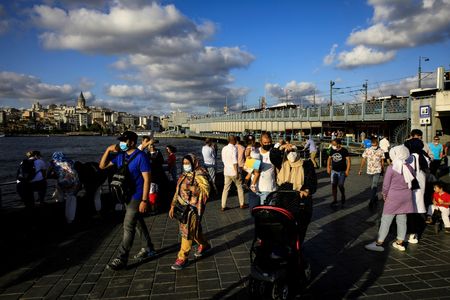By Ceyda Caglayan
ISTANBUL (Reuters) – The Turkish lira’s sudden stability after a roller-coaster year, despite annual inflation near 85%, is hurting exporters’ competitiveness and some risk losing markets, a top sector official told Reuters on Tuesday.
Mustafa Gultepe, chairman of the Turkish Exporters Assembly (TIM), said in an interview that the exchange rate should be directly proportional to inflation levels, although he did not propose a specific lira level.
“In order for us to be able to compete and sell our goods, if inflation is for example 60%, then the exchange rate should move by 60%,” Gultepe said. “Otherwise, the exports side and the production side comes to a halt.”
The comments come as authorities have employed a battery of regulations to tightly control the exchange rate in the wake of a historic lira crash in late 2021, a year in which it lost 44% to the dollar.
The currency shed another 29% this year, but has stabilized since the summer and held steady near 18.6 since early October. Meanwhile, annual inflation stood at 84.39% in November, easing for the first time in 17 months, while monthly inflation stood at 2.88%.
The earlier lira depreciation gave exporters of Turkish textiles, white goods and automobiles a big competitive edge globally. But since the central bank and government employed its reserves-management system – including using some exporters’ revenues to stabilise the currency – those benefits began to erode.
“The important thing in the long run is to reduce inflation. But at points when you can’t reduce it, the exchange rate must be supportive. Otherwise, we lose markets,” Gultepe said.
Despite the soaring prices over the last year, President Tayyip Erdogan’s government has undertaken an unorthodox policy of sharp interest rate cuts to boost economic growth and prioritise exports, production and investment.
(Reporting by Ceyda Caglayan; Writing by Daren Butler; Editing by Jonathan Spicer and David Evans)

